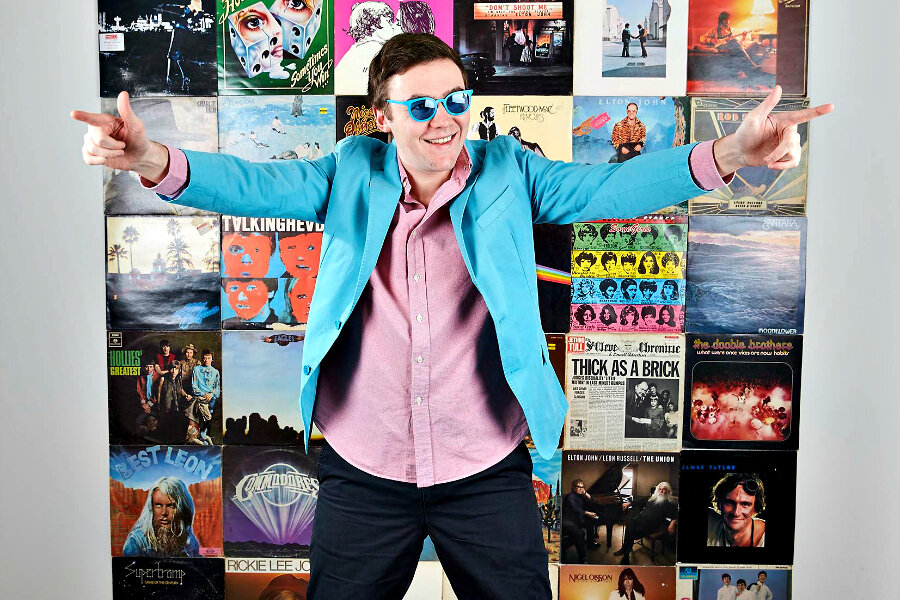Is 'The 30 Year Sweatshirt' an antidote to 'fast fashion'?
Loading...
How long should a single sweatshirt last?
If you ask European designer Tom Cridland, the answer is three decades.
Mr. Cridland is the mind behind his namesake British menswear brand, founded in 2014, which has since become known for its luxury clothing and growing list of celebrities who don the label.
One of his featured garments – the 30 Year Sweatshirt – is guaranteed to last for 30 years. Far from being merely a gimmick, the sweatshirt represents Cridland's desire to combat the “planned obsolescence” of what he describes as the “fast fashion” that has become common around the world.
“You get all this presentation with fashion,” Cridland says. “You get collections and shows … ridiculous outfits on catwalks … the most ridiculous costumes.”
What is lacking, he says, goes beyond the impracticality of the clothes. It also has to do with responsibility in their production.
In a recent phone interview with The Christian Science Monitor, Cridland shared his objectives – not only to produce high-quality products but also to launch a campaign against fashion trends that result in poorly made garments that don’t last long and use extensive resources to produce.
“Making really high-quality products is the most important thing for my brand and what I am trying to create,” he says. "Those products aren’t necessarily the flashy catwalk pieces, but the type of trousers or sweatshirt that one would wear on a normal day."
Cridland maintains a meticulous approach to designing and producing his evolving line of clothing. Premium fabrics and craftsmanship constitute the brand’s most significant expenses. Selling directly online cuts overhead and eliminates the need for retail markups, he says.
For a small company, run entirely by Cridland and his girlfriend, such an approach has created its share of challenges. At one point production was delayed when their hand-picked supplier in Portugal was forced off line due to a broken cutting machine. Such delays would not happen to big clothing company with numerous suppliers.
“We are not one of these 'fast fashion' retailers who can set up shop in every city center and turn out essentially very bad products that are going to wear out in a couple of years,” he says. The 30 Year Sweatshirt is guaranteed to last that long. Although it costs £65 ($92) he claims it can be inexpensive compared with buying a new sweatshirt every few years because the old one has fallen apart or shrunk. It's also more environmentally friendly since it won't be quickly tossed away.
Cridland invites his customers to pay attention to how his products are made. “It is important and interesting for people in general to take an interest in where it is made, how it is made,” he says.
Just as people might want to consider just what is in that fast food they're eyeing for lunch, he says, they should be concerned about whether the clothing they buy is made in a way that takes the environment and natural resources into consideration.
“People will be more inclined to buy from a brand trying to take some responsibility and give back,” Cridland says.
His brand has contributed a portion of its proceeds to an organization that provides grants to small entrepreneurs around the world.
That cause strikes home for the twenty-something Cridland, who launched his brand with the help of a government loan.
“Because I am such a small fish, I feel like I can barely make it,” he says. “When I got my government startup loan, I was delighted. It meant the world to me.”
Moving forward, Cridland is looking for new suppliers who can adhere to the high standards he has set for his brand. That means resisting a practice employed by many clothing labels: outsourcing to where labor is cheapest.
“It adds to our carbon footprint if we are a European fashion brand and we get all of our products shipped from China,” he says.
His other priority is to continue to improve his products – whether it is the 30 Year Sweatshirt itself, other items in the 30 Year clothing line, or his other offerings. He wants his relationship with his customers to be transparent, he says.
“It is our customers who have been the most supportive, patient, and loyal consumers. They have helped spread the word, and it is important to always let them know how grateful we are.”
• Learn more at www.tomcridland.co.uk.





